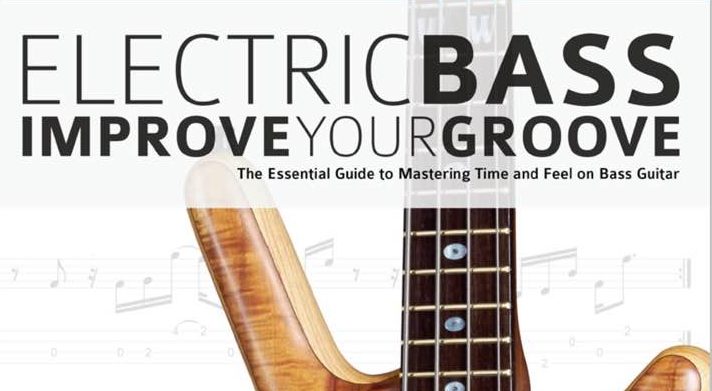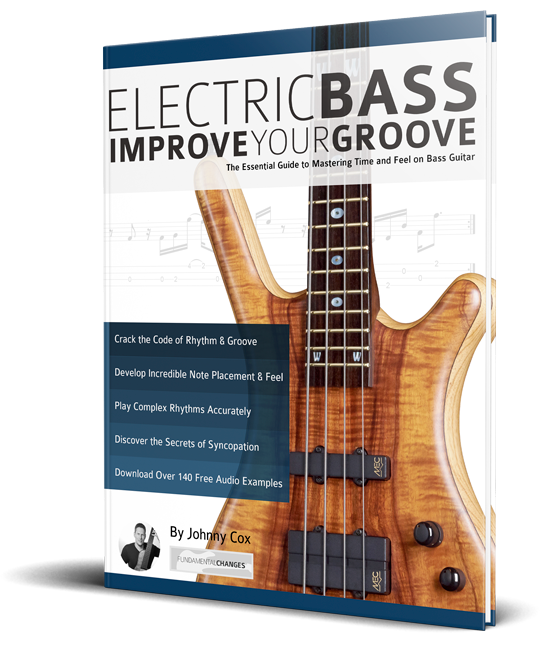Rhythm Changes (Oleo) with Tim Pettingale – Bass Practice Diary – 27th August 2019
I’ve written before about the importance of practicing with other musicians. And it was an absolute pleasure this week to welcome jazz guitarist Tim Pettingale to my studio in East London. Tim’s latest book, which I’ve been reading recently, is called Rhythm Changes for Jazz Guitar. So it seemed like a great opportunity to ask Tim to put me through my paces on a Rhythm Changes tune. We choose Sonny Rollins’ tune Oleo, because Tim refers to it in his book.
What is Rhythm Changes?
Rhythm Changes is a 32 bar chord progression which is loosely based on Gershwin’s tune I’ve Got Rhythm. Many famous jazz tunes have been written on the Rhythm Changes. And it’s the second most commonly used progression in jazz after the 12 bar blues. However, just like the blues progression, there are hundreds of variations that you can play for Rhythm Changes. And you rarely hear it played exactly the same way twice. Tim’s book features explanation and solo examples for many of these variations.
In the video, we’ve tried to feature a few cool variations and chord substitutions from the book in our very short rendition of Oleo. I’ll try and explain them very briefly here.
Rhythm Changes chord theory
Rhythm Changes has an AABA structure. Each A and B section is eight bars long. For the first two A sections we played Sonny Rollins’ melody. Then Tim’s solo started on the middle 8, which is the B section. We used the standard Rhythm Changes middle 8, which is four dominant 7th chords each played for two bars, D7 – G7 – C7 – F7.
The A section usually starts with a I-VI-II-V chord progression in Bb major. The VI chord is often played as G7 rather than Gm7. Having played the I-VI-II-V twice, we then played a cycle of II-V’s starting in Eb major. And then going through the keys Db major and C major before resolving back into Bb major. So bars 5-8 of the A section, as we played it, went like this, Fm7 – Bb7 – Ebm7 – Ab7 – Dm7 – G7 – Cm7 – F7 with two beats on each chord.
The next A section took us back to the start of the AABA form. And we started to introduce some chord substitutions. Instead of the usual I-VI-II-V’s, we played Dm7 – Db7b5 – Cm7 – B7b5. It’s a clever substitution for a I-VI-II-V because it creates a root movement descending in semi-tones. The Dm7 is chord III in Bb major. Chord III is a common substitution for Chord I because the notes in a Dm7 chord are the same as the 3rd, 5th, 7th and 9th of a Bbmaj9 chord. The Db7b5 is a tritone substitution for the G7 (chord VI) and the B7b5 is a tritone substitution for the F7 (chord V). The Cm7 is chord II and it’s the only one of the four chords that isn’t substituted.
We played one more A section, during which we played more or less the standard changes. And then we went into another B section. This time we played tritone substitutions on the D7 and C7 chords. So the progression as we played it was Ab7 – G7 – Gb7 – F7.
Tim Pettingale
All of these substitutions and many others are featured in Tim’s book. I would highly recommend it for anyone who plays guitar and wants to learn about jazz. Tim is the author of Jazz Bebop Blues Guitar as well as the Rhythm Changes book. His books are great, because they don’t assume any prior knowledge of jazz. So they very clearly explain the fundamental principles before going on to deliver simple guides to playing and improvising. All his books have an informal and easy to read style. And they contain multiple short examples written in standard notation and guitar TAB, all with accompanying audio Mp3’s.
During Tim’s visit we also shot another video of one of Tim’s original compositions, which was a jazz waltz. Keep checking both mine and Tim’s social media because we’ll be posting that video in the next few weeks.



